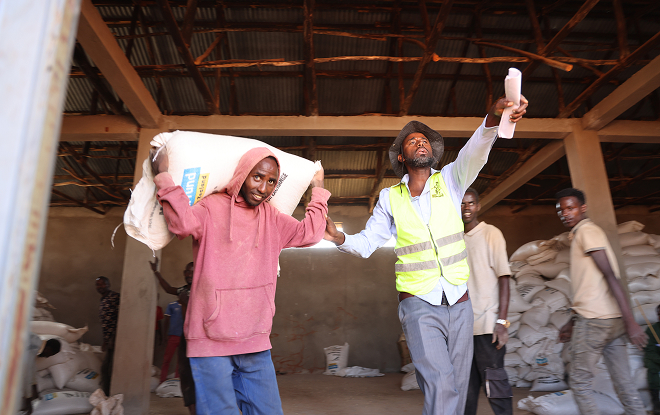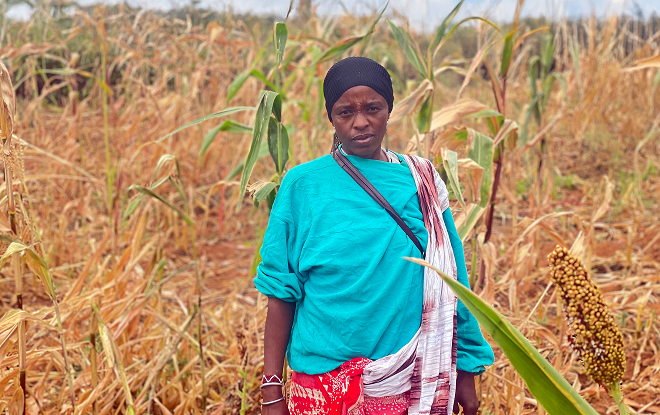Why Local Communities Must Lead Humanitarian Responses
454 0
Steph Fry is Tearfund’s Humanitarian Specialist. From Myanmar to Gaza, Steph works closely with our partners on the front lines of natural disasters and conflict.
When you hear the word ‘humanitarian’, what comes to mind?
Perhaps a GI Joe-looking character jumping out of a Hercules aircraft in cargo pants and a tan vest, delivering food rations in some remote part of the globe. Or a smartly dressed UN official giving updates from a conflict zone. These are the images that often dominate headlines, but they don’t tell the full story.
They overshadow the people who are truly at the heart of humanitarian response.
The Cambridge dictionary defines a humanitarian as “(a person who is) involved in or connected with improving people’s lives and reducing suffering.” I believe this definition perfectly fits our local partners, and the communities themselves, who show extraordinary courage and resilience in the face of a crisis.

In Moyale, Ethiopia, people distribute food to communities in need. The food supplied was in partnership with Tearfund and MFAT NZ.
Tearfund works through local partner organisations who are already embedded in communities when a disaster or conflict hits. They’re not parachuting in. They have established relationships, they are known, they are trusted. Local NGO’s will be there long after the international agencies leave, the media moves on to another crisis, and tents turn into people’s homes.
Take Terepeza Development Association (TDA) an Ethiopian NGO we partner with, for example. TDA is the only humanitarian organisation conducting food distributions in their communities in Borena, an incredibly remote, drought-stricken region of southern Ethiopia, near the Kenyan border. A 12+ hour 4WD from the capital, these communities have now entered their fourth consecutive year of drought. They are remote and they are difficult to reach and without TDA, they would be forgotten.

Terepeza Development Association (TDA) staff distribute food in Moyale, southern Ethiopia.
TDA has been working in Ethiopia for over 30 years. In Borena, they’ve distributed food aid, drought-resistant seeds, and livestock to pastoralist families trying to survive - with transformational results: 70% of households that received aid in 2024 no longer need any external assistance.
One of these families is led by Roma, a 40-year-old mother of nine. Roma lost all 15 of her livestock to drought. They were her only source of food, income and savings, and her family was on the brink of starvation. That’s when TDA stepped in with food aid, three goats, and livelihood training. Roma didn’t just survive—she helped rebuild a community. Today, she earns a daily income by running a small roadside stall selling goat’s milk.
“I thank all who supported me, saved my children, and established hope for (our) future,” she says.
Roma is one hero I think of when celebrating humanitarians—so are the staff at TDA. These humanitarians on the ground are the most at risk, the least visible, and the most effective. A 2024 UN report found that 95% of aid workers killed globally are local staff, yet their deaths receive 500 times less media coverage than those of international aid workers. Still, they show up—quietly, consistently, powerfully.

Roma, mother of nine children, farms in Moyale, Ethiopia.
Local NGOs bring unmatched strengths to humanitarian response: deep contextual knowledge, trusted relationships, and the ability to act quickly and stay for the long haul. They are often best placed to respond, but they remain underfunded and undervalued in a global aid system still dominated by international organisations.
It doesn’t have to be this way.
As New Zealanders, we can support models of aid that shift power and funding to those people closest to the crisis - models that don’t reinforce saviour narratives, but instead champion mana, agency and community-led solutions.
Tearfund NZ is committed to this approach. But real change requires a mindset shift, from all of us. Let’s stop asking how we can ‘save’ others and start asking how we can stand with those already leading.
As this year draws to a close, let’s celebrate the courage and compassion of those serving on the front lines of their communities—like TDA and the Romas of the world. Let’s honour those who have given their lives helping others. We honour the women, men, and communities who, with the right support, are overcoming the most difficult circumstances to bring hope and a future for themselves, their communities, and the generations to come.

Two women sit on bags of grain from Tearfund and MFAT, distributed by TDA in Moyale southern Ethiopia.
If you would like to donate towards our partner's work on the ground
Donate Now